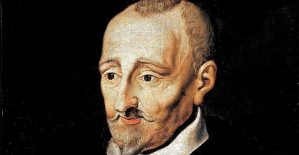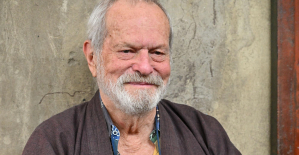In Kazakhstan, the instability is causing concern to its two strong neighbors Russia and China. It is Russia's strategic ally and exports the majority of its oil to China.
The first protests were triggered by a sudden rise in car fuel prices at the beginning of the year. The tens of thousands who marched into more than a dozen towns and cities to protest the price of car fuel have now taken the whole authoritarian government with them.
President Kassym Jomart Tokayev is becoming a more desperate figure. At first, he tried to placate the crowds by dissolving the entire government in the early hours of Wednesday. He changed his mind by the end. First, he described demonstrators as terrorists. He then appealed for assistance from a Russian-led military alliance called the Collective Security Treaty Organization. The CSTO agreed that it would send a specified number of peacekeepers to crush the uprising.
WHY ARE PEOPLE SO ANGRY?
Kazakhstan is the most populous and wealthiest of the five Central Asian republics to have gained independence after the collapse of the Soviet Union. It covers a vast territory as large as Western Europe, and is home to colossal amounts of oil, natural gas and precious metals.
However, despite Kazakhstan's natural wealth, which has helped to create a strong middle class and a large group of ultra-rich tycoons in the country, financial hardship is still widespread. The national average monthly salary is less than $600. Non-performing loans have led to deep banking crises that have left the banking system in a bind. Petty corruption is rampant in the region as it is elsewhere.
Zhanaozen, a small western town in western China, was the scene of the rally that triggered the current crisis. The region has long been plagued by resentments over the inequity of the region's oil wealth. Police shot at least 15 protestors in the city in support of strike-wage oil workers.
The patience of the residents snapped when the prices for the liquified petrol gas that they use to power their cars doubled over the weekend. The protests quickly spread to other cities nearby and were soon joined by large numbers of people.
Who IS DIRECTING THE PROTESTS?
Kazakhstan's suppression of critics has been a long-standing practice. Any opposition figures have been either suppressed, marginalized, or co-opted. These demonstrations were unusually large, drawing over 10,000 people. This is a significant number for Kazakhstan. However, no leaders of protest movements have emerged.
The power of Kazakhstan for most of its recent history was held by former President Nursultan Nazabayev. In 2019, however, the situation changed when Nazarbayev, now aged 81, decided to step aside and appointed Tokayev, his long-time ally, as his successor. Nazarbayev retained considerable power as the head of the security council, which oversees the military services and security services. Tokayev announced Wednesday his intention to replace Nazarbayev in the role of security council chief.
Many of the protests in the streets were directed at Nazarbayev rather than Tokayev who is widely considered the country's ultimate ruler. The main slogan is "Shalket!" ("Old Man Go")
WHAT RESPONSIBILITIES ARE AWARE OF?
According to an Almaty police officer, dozens of protestors were killed during attacks on government buildings. A minimum of 12 police officers were also killed in the attack on government buildings. One was even beheaded.
Saltanat Azirbek, a police spokesperson, said that there were attempted attacks on buildings in Almaty at night. "Dozens of attackers were eliminated." She spoke on state-owned channel Khabar-24. After widespread unrest in the area on Wednesday, including the seizure and setting fire to the mayor's office, the reports of attempted storming the buildings arose.
Initial reaction was consistent with the usual response to public discontent. The National Guard and police were both deployed in large numbers. Large phalanxes made up of armored personnel carriers and riot police met the crowd as it made its way to City Hall, Almaty's commercial capital. Normally, crowds can be dispersed quickly but this time there were too many people.
Tokayev, who witnessed government buildings being attacked in large cities, appealed to the Collective Security Treaty Organization for assistance. This is a Moscow-led military alliance. Tokayev justified his appeal for intervention from outside by claiming that protesters were acting at the direction of terrorist international groups. He did not elaborate on what he meant.
IS THE GOVERNMENT ELIGIBLE TO BE TOPPLED
This territory is unknown to Kazakhstan. There have been major protests in Kazakhstan before. In 2016, the country witnessed major demonstrations after the passing of a contentious land legislation. After the controversial election that secured Tokayev’s power, there were more demonstrations in 2019. Never was there anything like this.
Tokayev made a Wednesday appeal to the public, promising to continue reforms and hinting at possible political liberalization. However, his darker comments at the end of the day suggested that he would rather go down a more restrictive road.
Despite this, it is difficult to imagine how the street protests will end. Even if they don't overthrow the government, it is possible that they could lead to deep transformation. It is unclear what this might mean.

 United States: divided on the question of presidential immunity, the Supreme Court offers respite to Trump
United States: divided on the question of presidential immunity, the Supreme Court offers respite to Trump Maurizio Molinari: “the Scurati affair, a European injury”
Maurizio Molinari: “the Scurati affair, a European injury” Hamas-Israel war: US begins construction of pier in Gaza
Hamas-Israel war: US begins construction of pier in Gaza Israel prepares to attack Rafah
Israel prepares to attack Rafah First three cases of “native” cholera confirmed in Mayotte
First three cases of “native” cholera confirmed in Mayotte Meningitis: compulsory vaccination for babies will be extended in 2025
Meningitis: compulsory vaccination for babies will be extended in 2025 Spain is the country in the European Union with the most overqualified workers for their jobs
Spain is the country in the European Union with the most overqualified workers for their jobs Parvovirus alert, the “fifth disease” of children which has already caused the death of five babies in 2024
Parvovirus alert, the “fifth disease” of children which has already caused the death of five babies in 2024 Falling wings of the Moulin Rouge: who will pay for the repairs?
Falling wings of the Moulin Rouge: who will pay for the repairs? “You don’t sell a company like that”: Roland Lescure “annoyed” by the prospect of a sale of Biogaran
“You don’t sell a company like that”: Roland Lescure “annoyed” by the prospect of a sale of Biogaran Insults, threats of suicide, violence... Attacks by France Travail agents will continue to soar in 2023
Insults, threats of suicide, violence... Attacks by France Travail agents will continue to soar in 2023 TotalEnergies boss plans primary listing in New York
TotalEnergies boss plans primary listing in New York La Pléiade arrives... in Pléiade
La Pléiade arrives... in Pléiade In Japan, an animation studio bets on its creators suffering from autism spectrum disorders
In Japan, an animation studio bets on its creators suffering from autism spectrum disorders Terry Gilliam, hero of the Annecy Festival, with Vice-Versa 2 and Garfield
Terry Gilliam, hero of the Annecy Festival, with Vice-Versa 2 and Garfield François Hollande, Stéphane Bern and Amélie Nothomb, heroes of one evening on the beach of the Cannes Film Festival
François Hollande, Stéphane Bern and Amélie Nothomb, heroes of one evening on the beach of the Cannes Film Festival Skoda Kodiaq 2024: a 'beast' plug-in hybrid SUV
Skoda Kodiaq 2024: a 'beast' plug-in hybrid SUV Tesla launches a new Model Y with 600 km of autonomy at a "more accessible price"
Tesla launches a new Model Y with 600 km of autonomy at a "more accessible price" The 10 best-selling cars in March 2024 in Spain: sales fall due to Easter
The 10 best-selling cars in March 2024 in Spain: sales fall due to Easter A private jet company buys more than 100 flying cars
A private jet company buys more than 100 flying cars This is how housing prices have changed in Spain in the last decade
This is how housing prices have changed in Spain in the last decade The home mortgage firm drops 10% in January and interest soars to 3.46%
The home mortgage firm drops 10% in January and interest soars to 3.46% The jewel of the Rocío de Nagüeles urbanization: a dream villa in Marbella
The jewel of the Rocío de Nagüeles urbanization: a dream villa in Marbella Rental prices grow by 7.3% in February: where does it go up and where does it go down?
Rental prices grow by 7.3% in February: where does it go up and where does it go down? Even on a mission for NATO, the Charles-de-Gaulle remains under French control, Lecornu responds to Mélenchon
Even on a mission for NATO, the Charles-de-Gaulle remains under French control, Lecornu responds to Mélenchon “Deadly Europe”, “economic decline”, immigration… What to remember from Emmanuel Macron’s speech at the Sorbonne
“Deadly Europe”, “economic decline”, immigration… What to remember from Emmanuel Macron’s speech at the Sorbonne Sale of Biogaran: The Republicans write to Emmanuel Macron
Sale of Biogaran: The Republicans write to Emmanuel Macron Europeans: “All those who claim that we don’t need Europe are liars”, criticizes Bayrou
Europeans: “All those who claim that we don’t need Europe are liars”, criticizes Bayrou These French cities that will boycott the World Cup in Qatar
These French cities that will boycott the World Cup in Qatar Medicine, family of athletes, New Zealand…, discovering Manae Feleu, the captain of the Bleues
Medicine, family of athletes, New Zealand…, discovering Manae Feleu, the captain of the Bleues Football: OM wants to extend Leonardo Balerdi
Football: OM wants to extend Leonardo Balerdi Six Nations F: France-England shatters the attendance record for women’s rugby in France
Six Nations F: France-England shatters the attendance record for women’s rugby in France Judo: eliminated in the 2nd round of the European Championships, Alpha Djalo in full doubt
Judo: eliminated in the 2nd round of the European Championships, Alpha Djalo in full doubt


















